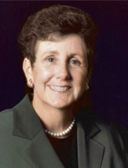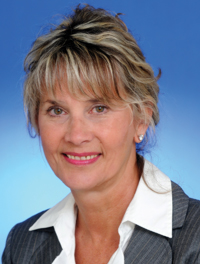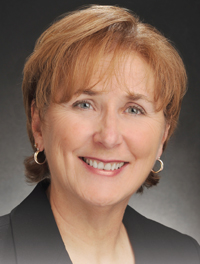
Adele Eberhart, RDH, MS, is head of site management in the United States for San Francisco-based Genentech, a biotechnology company that uses human genetic information to discover, develop, manufacture, and commercialize medicines to treat patients with serious or life-threatening medical conditions. She oversees all American region management of trials for first entry and early development Phase I through proof of concept, as well as all oncology trials Phase I through Phase III under investigational new drug applications with the US Food and Drug Administration.
How did you move into other areas of research beyond dentistry and dental hygiene?
After graduating from the University of California, San Francisco (UCSF), one of my primary interests was salivary research and the iatrogenic effect of drugs. My early practice settings were hospital-based—rounding with medical school care teams and then managing high-risk patients to ensure they received appropriate dental care. I was very interested in the introduction of new medicines and preemptively examining the oral effects. When a Phase III trial was beginning for a new class of drugs, I would add an additional study to monitor and manage salivary and oral effects. My work at the University of Missouri-Kansas City’s (UMKC) adult care center, children’s hospital, and mental health center led to further collaborations. Teaching research design, statistics, and research ethics to dental hygiene, pharmacy, nursing, and graduate students (and later medical residents and fellows) gave me the basics I needed to evaluate trial design across a broad range of medical disciplines. After acquiring a solid knowledge base, you can’t be afraid to delve into new areas of discovery with appropriate collaborators and mentors. Serving on an institutional review board and research funding committees expanded my interactions in medicine and pediatrics, allowing me to help researchers design and conduct trials.
What advice would you give dental hygienists who are interested in research as a career path?
Connect with a graduate dental hygiene program or dental/medical research center. Begin in data or trial coordination depending on your background, certifications, and licensure. Initially, volunteer in a clinical research center if need be. Attend meetings of your local Association of Clinical Research Professionals, and any relevant workshops or courses offered by universities and extension programs. Find a mentor. I have crossed paths with a number of dental hygienists who are very successful in new product or medical clinical development.
When did you realize that research was the right career path for you, and was there an experience that brought you to this conclusion?
Growing up and in the multidisciplinary environment at UCSF while acquiring my BS, RDH, I clearly saw that research was a path to the future that could lead to emerging knowledge, improved patient care, and gratifying discovery. Receiving a funded 2-year research fellowship sealed the deal for me to be able to pursue this career path—and for that I thank Maxine Tishk, RDH, MS, UMKC, Warner-Lambert, and the National Institutes of Health.
What about your job makes you want to jump out of bed each morning?
People! First, patients who may benefit from breakthrough medicines. Next, the dedicated people I work with at Genentech. These clinical research professionals work the frontlines with academic and research centers to ensure that trials are appropriately conducted, data are promptly and fully reported, and that we learn from any untoward events so we can modify our next steps. Complex situations arise. This entire clinical research continuum must be supported by an encouraging, honest environment where people aggressively debate, seek new learning, and apply accurate findings. It’s fun.
What makes you want to hide under the covers?
When on vacation, I can afford to hide under the covers to my heart’s content. Otherwise, there are new emails 24/7 from around the world—new molecules with evidence of possible human benefit to move into “first-in-human” trials, new processes to consider, and new challenges to work out. The clock is always ticking.




